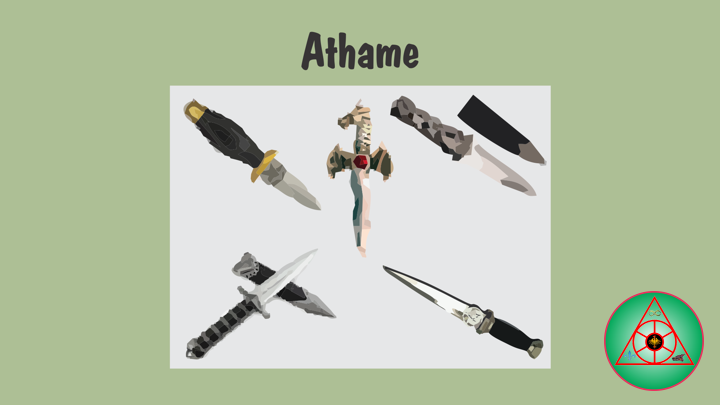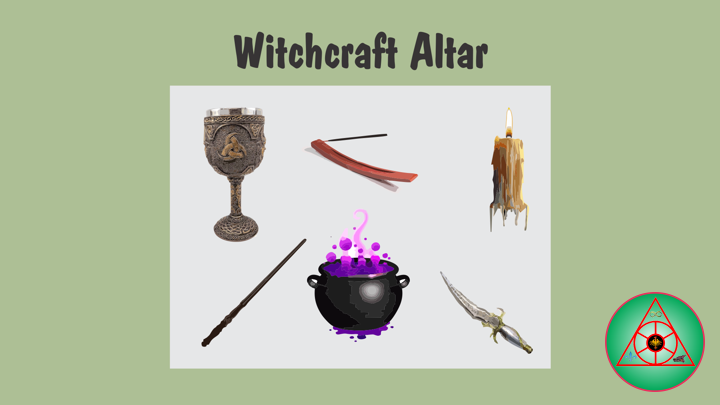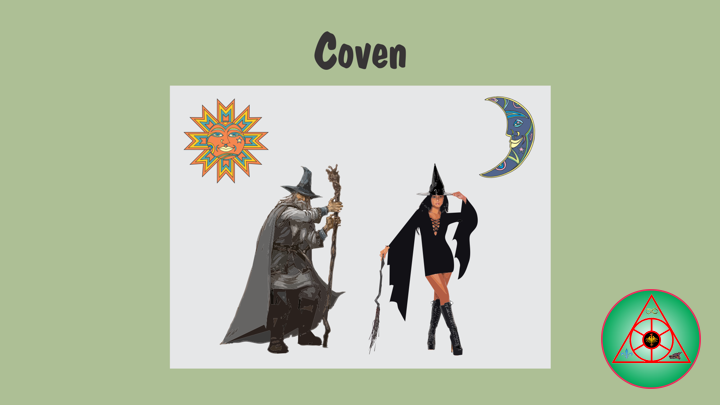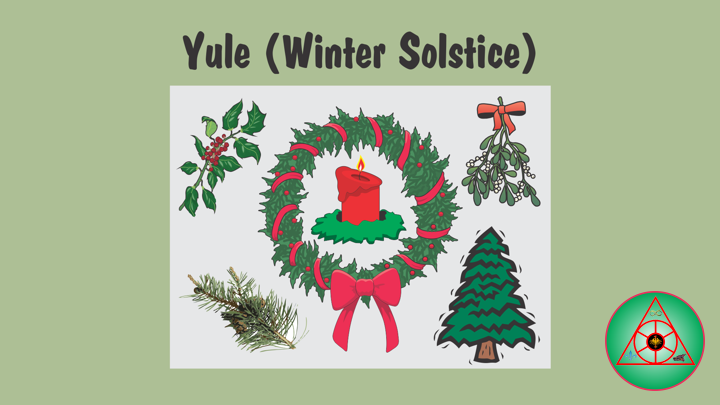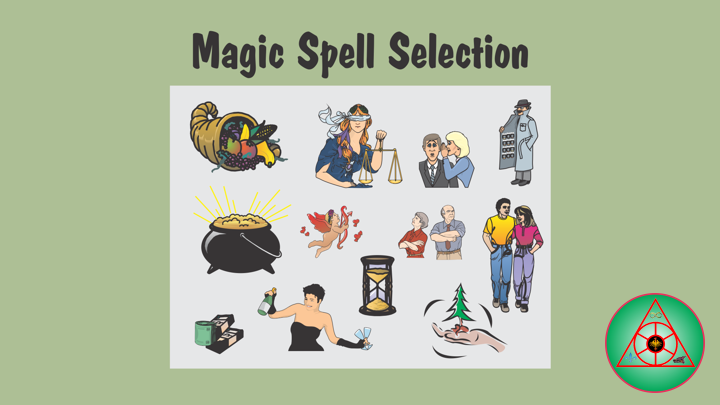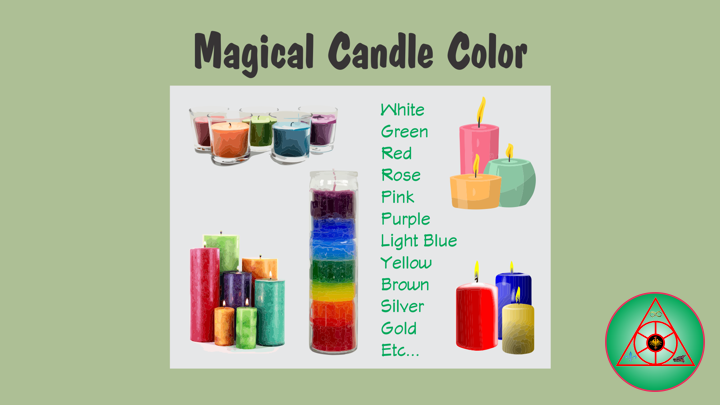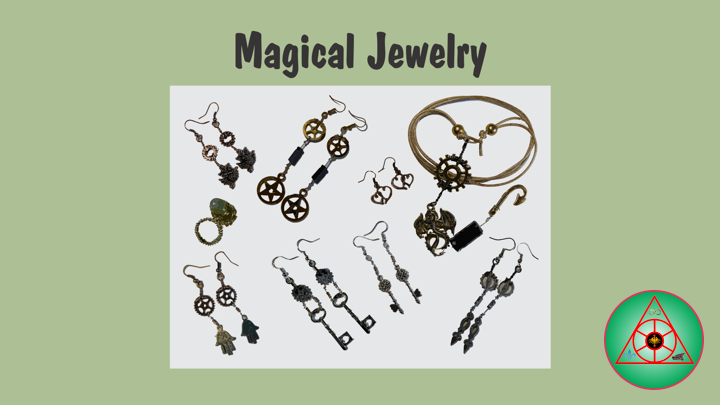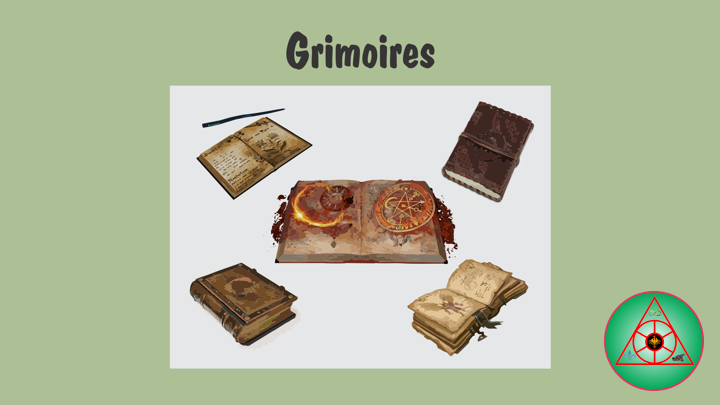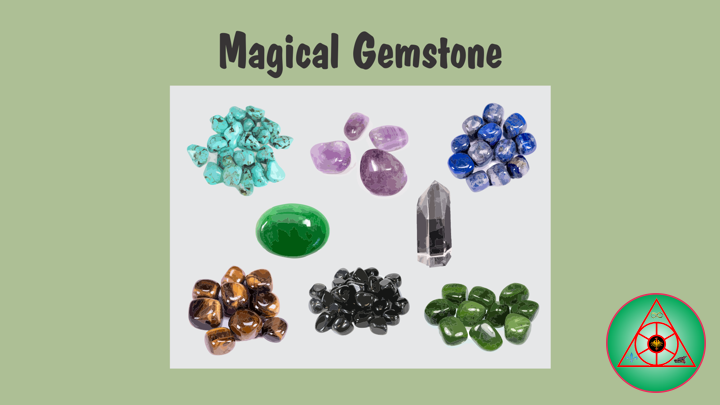——
#Magic #TLBWB #HighPriest #Witchcraft #Wizard #Witch #Athame #BookOfShadows #WheelOfTheYear #MagicalHerbs #MagicalOils #Incense #Pentacle #MagicCircle #MagicSpell #Grimoire
——
——
Athame
An athame is a ceremonial blade, generally with a black handle. It is the main ritual implement or magical tool among several used in ceremonial magic traditions, and by other neopagans. An athame can take many forms. Contrary to popular belief, athames are not required to have double-edged blades. Contemporary Witchcraft practitioners often choose a double-edged blade since this carries symbolic meaning. Some Witchcraft will choose a single edge athame and use the straight edge to ring the bell for rituals. The athame’s primary use is to channel and direct psychic energy, generally conceived as etheric fire. They are usually not supposed to harm or draw blood.
The ritual drawing of the boundary of the magic circle, also known as “Casting The Circle”, is usually done with an athame. The athame is associated with the magical element of fire, so the circle is considered to be cast in etheric fire. This fire is traditionally envisioned as blue, indigo or violet, although it may equally well be envisioned as other colors. When the circle is ritually purified after being cast, that is traditionally done with the remaining three elements air (Incense), water (Salt-Water), and earth (Salt), because the element of fire has already been imbued into the circle during the casting, by the use of the athame.
After the casting, the athame is the tool traditionally used to invoke the elemental guardians of the four directions, Calling The Quarters, typically by drawing invoking pentagrams at each quarter. As a Masculine Principle, the athame is often used in combination with the chalice, as Feminine Principle, evoking the act of procreation, as a symbol of universal creativity. The athame represents the magical element of fire, associated with the Sun and the Horned God; while the chalice represents the magical element of water, associated with the Moon and the Goddess. The union of the two then represents the union of God and Goddess, Male and Female, Sun and Moon, Fire and Water. The marriage of the Sun and Moon, the union of opposites, is an ancient idea in alchemy, and the Hieros Gamos or Sacred Marriage of God and Goddess is an even more ancient idea in pagan religions. This rite is done by dipping the athame into the chalice to bless the wine. This is a symbol of the Great Rite in Witchcraft rituals. Some modern Witchcraft traditions may prefer not to use iron blades, instead preferring alternatives such as copper, bronze or stone, such as obsidian. If they conceive of this casting in the traditional way, as a casting of etheric fire via a projection of psychic energy. One common way to do this is by using the four magical elements of Fire (Candle), Air (Incense), Water and Salt, and perhaps anointing the blade with an oil infused with magical herbs.
If they conceive of the circle casting as cutting a line in the air with the tool of air, then they may choose to purify the circle with the remaining three elements of fire, water, and eart, this would involve using a candle to purify the circle, and omitting the incense, since the circle has already been imbued with the element of air.
Follow Us
Languages Spoken and Written: English, French and Spanish.
eMail: lostbeardedwhite@sassquatch.org
Facebook: https://www.facebook.com/neosteam.labs.9/
YouTube: https://www.youtube.com/channel/UC5eRjrGn1CqkkGfZy0jxEdA
Twitter: https://twitter.com/labs_steam
Pinterest: https://www.pinterest.com/NeoSteamLabs/
Instagram: https://www.instagram.com/luc.paquin/
The Lost Bearded White Brother

